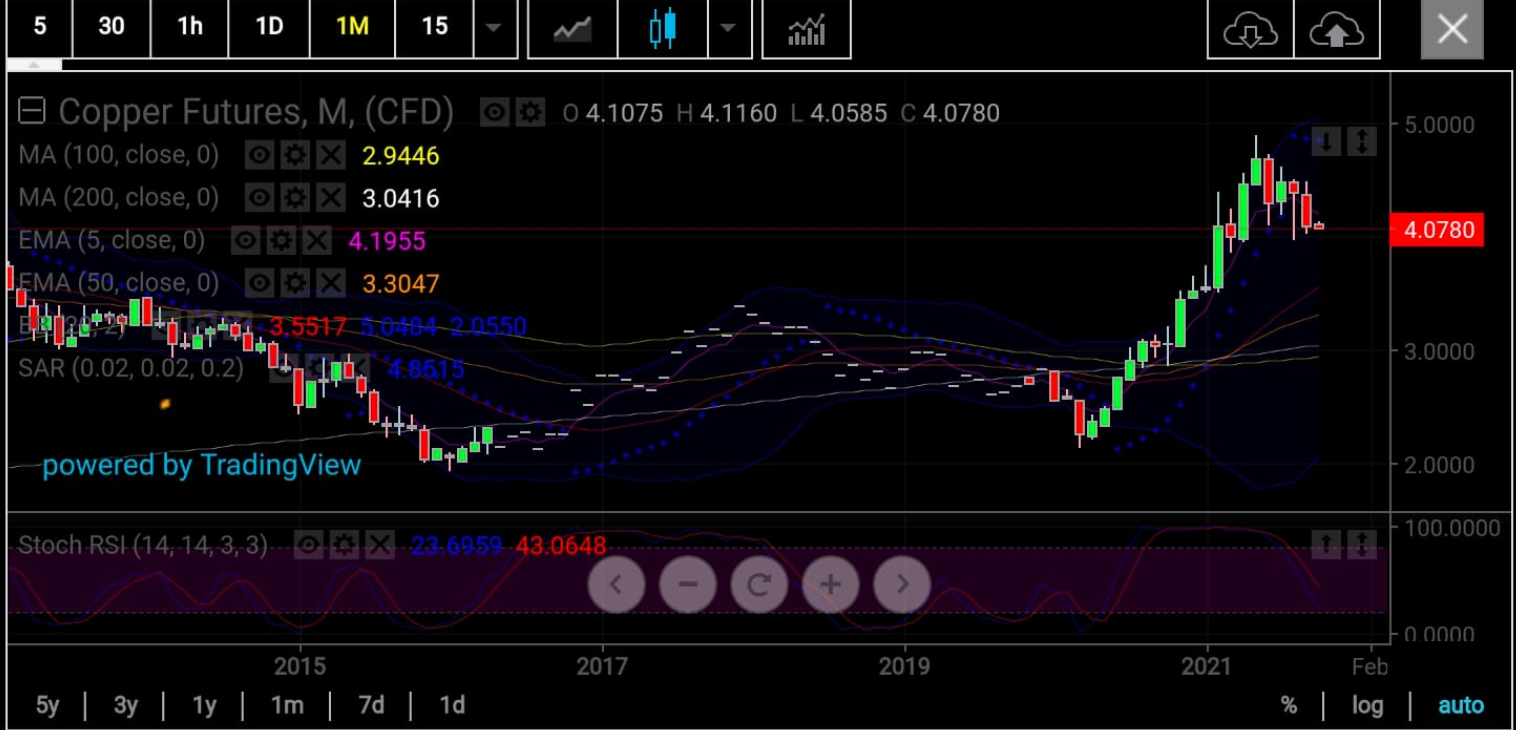With volatility in global markets being just as ‘hellish’ as feared in September, investors in commodities are taking stock of what’s left for the fourth quarter—and whether some of Q3’s outperformers will continue delivering.
The heavily energy-weighted 19-commodity TR/CC CRB Excess Return Index rose 2.2% for the third quarter and 5% in September alone on a blowout in crude and natural gas prices.
Topping market participants’ concerns for the final three months of 2021 is, of course, inflation and what the Federal Reserve and other central banks will do to mitigate one of the most intense periods in history for price pressures.
Different commodities react differently to inflation; even those that are supposed to be the best hedge—such as gold—have performed woefully for a variety of reasons that may have nothing to do with their fundamentals. The yield on the 10-year US Treasury note, for instance, has done more damage to gold’s safe-haven status this year than any other variable.
With investors counting on less Fed mumbo-jumbo—and hard start and stop dates—for a change, and on the tapering of the $120 billion monthly bond-buying program, the fourth quarter could be more definitive than the preceding three months. The expectation thus far is for November to be the month of clarity, depending on how US jobs numbers—the holy grail for the Fed—performs this month.
Away from fiscally-sensitive environments, energy and food commodities could continue seeing the usual ebb and flow of investor interest through the year-end, with supply-chains and weather being the key determinants, respectively, for their price behavior.
Barring another Hurricane Ida-like disruption on energy production in the US Gulf Coast of Mexico, oil and gas output could steady, limiting inordinate price spikes.
Reported plans by OPEC+ to add more than the 400,000 barrels per day of output it has committed to for the coming months could also keep a firmer lid on prices. This isn’t to say that daily trading in the space will be devoid of the usual supply-related shocks, such as early winter storms, that could easily bump up crude and natural gas prices by several percentage points a day.
Extraordinarily bad crop weather could also be a catalyst for the continued rise in prices of food commodities such as arabica coffee this quarter.
While fundamentals ostensibly have a dominant role in shaping the outcome of the different raw materials markets in the final three months of the year, just as important sometimes are technical indicators.
Sunil Kumar Dixit, chief strategist at Kolkata-based SK Charting and a regular contributor to Investing.com, breaks down for us, what the charts say for each commodity subset and select market:
Energy
Crude oil is up 55% on the year, with 2% of that coming from the third quarter.

All charts courtesy of SK Charting
“Oil is defying gravity and refusing to step down below the 200-Simple Moving Average on the monthly chart. If continued, this can add wings to black gold, sending prices to the $79 area and extending to $83,” said Dixit.
Natural gas is the best performing commodity of 2021, returning almost 135% year-to-date from a combination of weather extremities since spring and underwhelming production. Some 60% of that gain came in the third quarter alone.

Said Dixit:
“September witnessed natgas soaring to $6.28 before closing at $5.86. The parabolic rise is very likely to enter distribution phase with the 200-Simple Moving Average of $4.438 in confluence with the 5-Exponential Moving Average of $4.431 on the monthly chart as first attraction.”
“Further, the extremely oversold Stochastic Relative Strength Index reading of 100 /97 supports the possibility of consolidation, if not correction.”
Metals
Spot Gold, which reflects real-time trading in bullion, is down just over 8% for the year.

Said Dixit:
“Spot gold’s September close of $1,756 an ounce was down $78 down from the month’s high of $1,834. The Stochastic RSI reading 3.40/6.05 indicates an oversold state of the metal. Prices sustaining above $1,745 may help gold resume an upward move towards $1770-$1,785-$1,800.”
“Breaking below $1,745 may restart selling towards the $1,722-$1,716 levels, extending to the horizontal dynamic support of $1,690.”
Copper futures on New York’s COMEX are up almost 16% year-to-date. But that was after a drop of almost 5% in the third quarter, emanating from a 6.5% deficit in September and 2.3% in August. The saving grace was July’s gain of 4.3%.

“Closing in the red for two months back-to-back, copper shows a bearish correction, extending to the 3.77 Fibonacci level and the 3.55 middle Bollinger Band. These are supported by a bearish stochastic signal line at 23 and a slow stochastic at 43 that has ample space for downside,” said Dixit.
Crops
Arabica coffee on ICE Futures US is the best performing crop for 2021, up 51% on the year and 22% in the third quarter.

“Coffee closed September month on a very bullish tone within the July 2021 bullish engulfing formation,” said Dixit.
“Prices holding above the primary support of $1.82 can project coffee towards $2.15 and $2.25. The Stochastic signal line is up at 97 while the slow stochastic line is at 93.”
Disclaimer: Barani Krishnan uses a range of views outside his own to bring diversity to his analysis of any market. For neutrality, he sometimes presents contrarian views and market variables. He does not hold a position in the commodities and securities he writes about.
Which stock should you buy in your very next trade?
With valuations skyrocketing in 2024, many investors are uneasy putting more money into stocks. Unsure where to invest next? Get access to our proven portfolios and discover high-potential opportunities.
In 2024 alone, ProPicks AI identified 2 stocks that surged over 150%, 4 additional stocks that leaped over 30%, and 3 more that climbed over 25%. That's an impressive track record.
With portfolios tailored for Dow stocks, S&P stocks, Tech stocks, and Mid Cap stocks, you can explore various wealth-building strategies.
